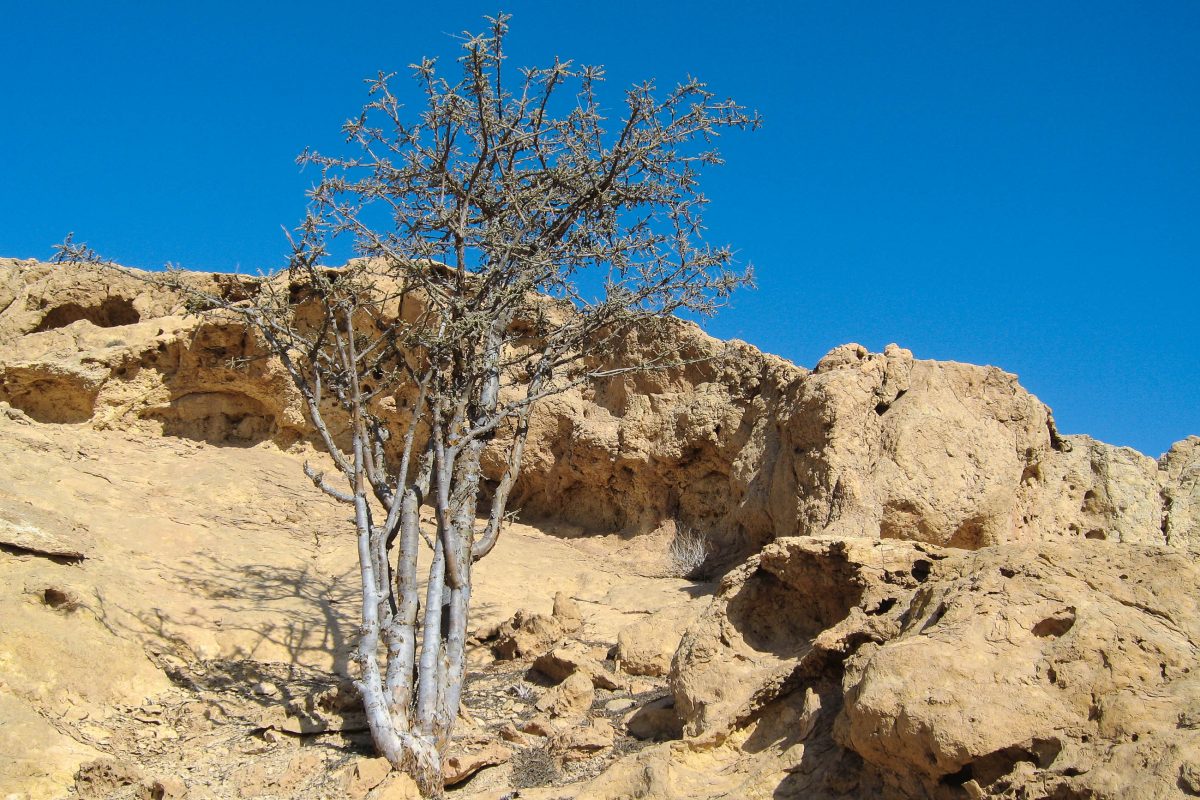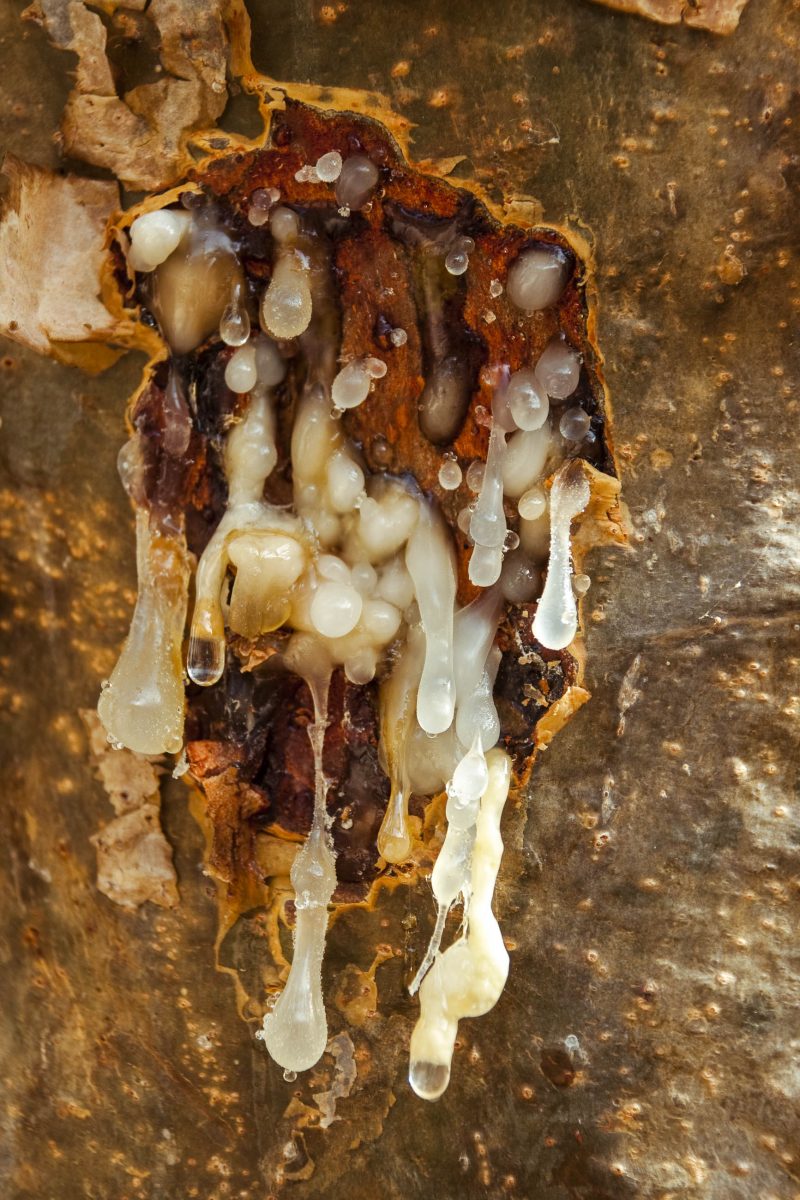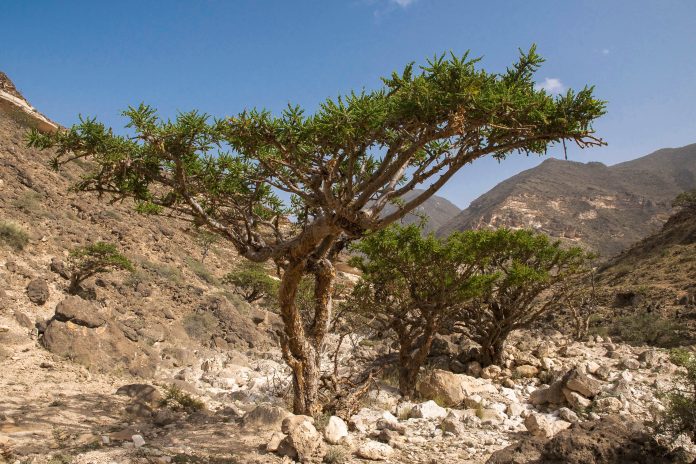Das Wadi Dawkah im Süden Omans gilt seit der Antike als Herkunftsort des Weihrauchs. Obwohl es nur noch den Bruchteil seines früheren Wertes besitzt, wird hier das duftende Harz noch wie vor 3.000 Jahren geerntet.
Wer sich für die Geschichte Omans interessiert, sollte sich einen Besuch im Wadi Dawkah nicht entgehen lassen. In der „Wiege des Weihrauchs“ wird seit Jahrtausenden das kostbare Geschenk Allahs gewonnen. Das wohlriechende Harz wurde damals mit Gold aufgewogen, machte Könige reich und mächtig und brachte manchen von ihnen ebenso den Untergang.
Schon im Grab von Tutanchamun im ägyptischen Tal der Könige wurden Weihrauchstücke gefunden und in Rom, Babylon, Persien und Ägypten wurden den Göttern Räucheropfer dargebracht.
An der Weihrauchstraße

Das Wadi Dawkah liegt in der Provinz Dhofar im Süden Omans etwa 40km nördlich von Salalah und gilt seit der Antike als Herkunftsort des kostbaren Harzes. Es befindet sich an der legendären Weihrauchstraße, die vom Oman über Jemen und Saudi Arabien, am Roten Meer entlang bis ins jordanische Petra und über den heutigen Gaza-Streifen ins ägyptische Alexandria führt.
Vom vermutlich ersten Transport von Weihrauch auf der Weihrauchstraße berichten sowohl die Bibel als auch der Koran. Im 10. Jahrhundert vor Christus soll die Königin von Saba nach Palästina gereist sein und dem König Salomo neben Gold und Edelsteinen auch Weihrauch als Geschenke mitgenommen haben.
Unter der Bezeichnung „Land of Frankincense“ („Land des Weihrauchs“) zählt das Wadi Dawkah gemeinsam mit anderen Stätten an der Weihrauchstraße zum Weltkulturerbe der UNESCO.
Besuch im Wadi Dawkah
Auf den ersten Blick wirkt das Wadi Dawkah wenig spektakulär. Ein scheinbar trockenes Tal, an dem sich Unmengen von knorrigen Weihrauchbäumen aneinander reihen. Wer sein Auto am Parkplatz stehen lässt und sich den Bäumen nähert, wird schon bald von einem Betreuer des Weihrauch-Tals angesprochen, von dem jeder Besucher viel über den Weihrauch lernen kann.

Früher war die Weihrauchernte eine regelrechte Zeremonie und die „Tränen der Götter“ wurden in die ganze Welt exportiert. Weihrauchbäume können weder verpflanzt noch gezüchtet werde und so hielten die Araber über viele Jahrhunderte das Weihrauch-Monopol.
Heutzutage ist Weihrauch nur noch einen Bruchteil von damals wert, im Oman ist er allerdings immer noch beliebt.
An die 5.000 Bäume wachsen im Wadi Dawkah, die noch mit derselben Methode wie vor 3.000 Jahren bewirtschaftet werden. Ihre Rinde wird angeritzt, um drei Wochen später das austretende Harz zu ernten. Nach drei Jahren wird dem Baum eine mehrjährige Erholungspause gegönnt.
Je heller das Harz ist, desto weniger verunreinigt und desto wertvoller ist der Weihrauch. Der so genannte „Hougari“ aus dem Wadi Dawkah gilt heute noch als weltbester Weihrauch. Von dem einst blühenden Geschäft zeugen allerdings nur noch die Ruinen entlang der Weihrauchstraße.





